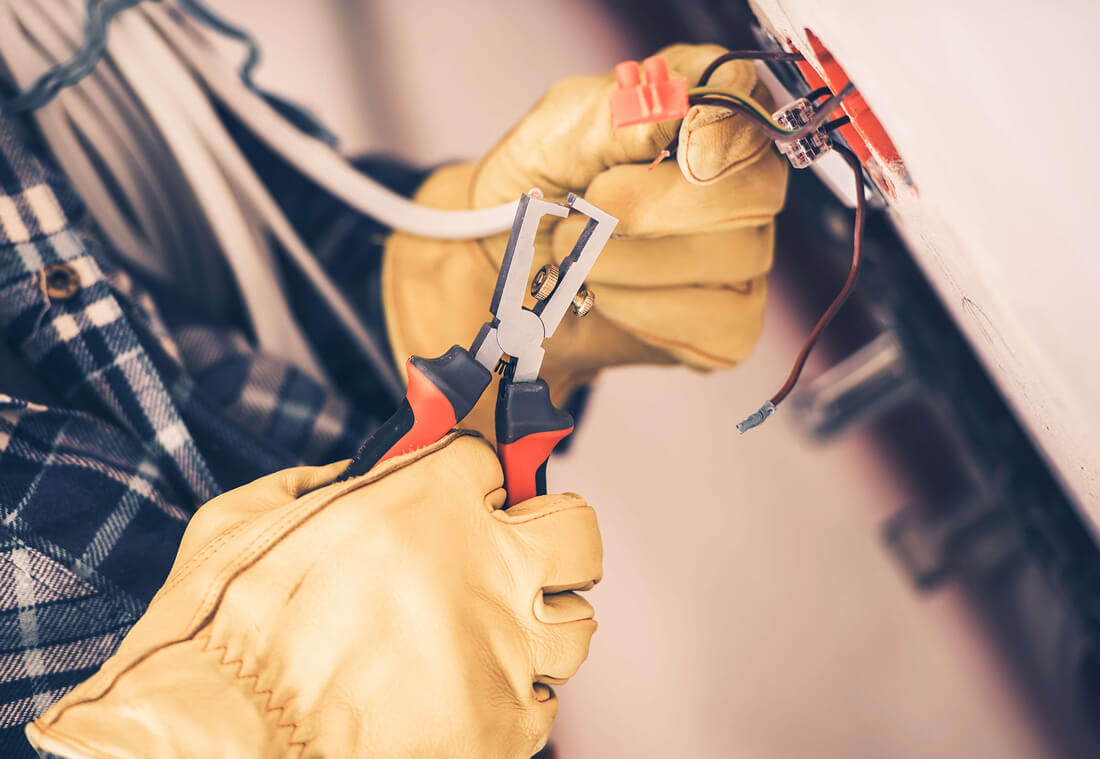
27 Jun Lighting Retrofit 101 – Ten Costly Mistakes to Avoid
For large commercial buildings, manufacturing facilities, and enterprise-wide portfolios, lighting and sensor upgrades have the capacity to deliver one of the highest returns on investment out of all efficiency projects. Not only can a lighting retrofit result in energy savings of up to 65% on average, the enhanced lighting quality from modern fixtures delivers improved occupant comfort from glare reduction, the fixtures’ longer lifespan reduces maintenance costs, and the simple payback on the project is frequently achieved well within three years – and sometimes in a few as eighteen months.
However, not all upgrades are created equal. In order to help you get the most out of your efficiency project, we’ve compiled this list of ten costly mistakes to avoid when embarking on a lighting retrofit. Keeping these points in mind can help you get the highest possible return on your investment.
10. EMBARKING ON A RETROFIT WITHOUT CONSULTING A QUALIFIED EFFICIENCY PARTNER
This is quite possibly the costliest misstep that a business, REIT, or portfolio management company can make because it can lead to making almost every other mistake on this list. Lighting retrofits have the potential to deliver huge returns, but the implementation requires expertise not only in lighting installation, but also in design, controls, rebate and incentive negotiation, product evaluation and testing, and eventual savings verification.
Leaving all of these aspects to an inexperienced team or to your internal maintenance staff can result (and has resulted) in the project needing to be completely redone.

9. OVERLOOKING SAVINGS OPPORTUNITIES
Lighting retrofits are more than the sum of their components, and looking at the upfront costs, without calculating the savings potential over time, does not paint the entire picture. When evaluating a lighting retrofit, it’s important to calculate the top line investment less the rebates and incentives, the simple payback timeline, the reduction in maintenance costs, and the potential for positive cashflow in perpetuity.
8. INSTALLING NEW TECH JUST BECAUSE IT’S “NEW”
When you decide to go “all-in” on a lighting retrofit, it’s tempting to want all of the bells and whistles because, you might as well, right? Not quite. A lighting retrofit is an efficiency upgrade and savings opportunity first and foremost, and getting caught up in the latest and greatest controls or features can suck away your savings potential. Every aspect of the upgrade should be evaluated based on a cost/benefit ratio – do you need fixtures that can withstand harsh conditions? If yes, then the benefit is worth it. If no, don’t pay for what you don’t need.

7. NOT GETTING BUY-IN FROM ALL STAKEHOLDERS
In designing a lighting retrofit, it’s important to account for the considerations of all invested parties. The building occupants and the maintenance personnel are often overlooked stakeholders who will likely be impacted the most by the final results. A designer may suggest a change to color temperature for the sake of aesthetics, but that change may not sit well with the building’s occupants, resulting in employee complaints and loss of productivity. Meanwhile, it’s crucial you check with the maintenance department to be sure the positioning of fixtures and choices surrounding ganging of multiple LED engines fixtures to a single driver remain easily accessible and manageable. This will keep you from incurring unforeseen maintenance labor costs down the road.
6. PURCHASING FIXTURES AND HARDWARE BASED ON PRICE
It’s tempting to go bargain hunting when the job requires thousands of fixtures – after all, how different could two lights be? The short answer is extremely different. Compromising on quality in order to get a lower upfront cost will come back and bite you in the end. One way to avoid getting burned is to always ask for a warranty, and then read that warranty to make sure it covers material, design and installation. Then be sure to look into the company itself – is it legitimate? What is its net worth? A warranty delivered by an unrecognized off-shore fly-by-night isn’t worth the paper it’s printed on. Finally, when buying in scale, be sure to negotiate your custom warranty terms.
5. NOT PERFORMING A LIGHTING AUDIT
The lighting audit is one of the most important parts of a quality lighting retrofit and will serve as the blueprint for the entire project. In addition, the audit serves as the basis for project verification and is often required for gathering the information needed to complete utility rebate and incentive applications. The audit accounts for everything from the number and type of fixtures on each floor, to the occupancy levels in each room, special working conditions, time limitations, fixture conditions, lamp outages, and light level readings. It is used to plan and troubleshoot the ordering of parts, installation and billing verification. Without it, the implementation team is blind to the most critical data driving the project.

4. FAILING TO VERIFY THE RESULTS
One of the greatest aspects of modern lighting retrofit projects is that it is so easy to verify whether or not the upgrade performs as promised. Comparing the project cost savings to what was outlined by the implementation partner is one way to verify that the retrofit was worth the effort and expense.
NOTE: It is important to keep up the evaluation over time because sometimes the savings rates right out of the gate are not an accurate depiction of the savings rates over time. Depending on the quality of the fixtures, different lumen curves apply, while overdriving low wattage LED panels can result in a warranty-voiding product failure.
3. DELAYING THE PROJECT
Whether it’s because you’re waiting for a jackpot-level utility rebate or it’s simple corporate inertia, the reasons for delaying a lighting retrofit project don’t hold water when you compare the potential savings over time with simply doing nothing. It’s true, your lights may be working just fine as they are. Yes, a lighting retrofit is a big job that has the potential to require your input for a while, and yes, it’s possible in a year or two some incremental technological improvements may materialize. But the thing to remember about efficiency projects is that their real savings power is gained over time and every year you put it off is another year of unrealized savings that you can never ever get back. Plus, the opportunities now available through sensor-backed intelligence are only just being developed, and the more cumulative data you have, the greater the IoT potential in perpetuity.
2. NOT MAKING APPLES-TO-APPLES PROPOSAL COMPARISONS
You’ve decided to go ahead with a lighting retrofit, and now it’s time to evaluate proposals from possible implementation partners. The importance of taking this step seriously cannot be overstated, because making a false move here can result in disruption to occupants, poor quality components, and unrealized potential for years to come. When evaluating proposals make sure to look at the savings numbers compared with the projected utility rate increases – are these increases realistic or inflated? Are the proposal numbers based on an examination of your utility bills over time or on state and industry averages? Does the proposal accurately depict your lighting usage (burn hours by fixture type)? What do the implementation schedule and project timelines look like? Do they accommodate your business operations or require floor/facility shut-down’s?
Additionally, what is the financial health profile of your implementation partner? Do they have the capacity to absorb front-end costs associated with product and labor? You don’t want to be subjected to a lien or other legal recourse because your partner doesn’t have the cash flow or credit access to pay its subcontractors and suppliers.

1. CHOOSING THE WRONG IMPLEMENTAION PARTNER
The number one costliest mistake associated with a lighting retrofit is choosing the wrong implementation partner. There is so much to consider when putting together a large scale retrofit, it’s important to select a partner who is experienced in all aspects including:
- Lighting Audits
- Utility Rebate and Incentive Acquisition
- Lumen Evaluation & Selection
- Expertise in Sensor, Controls & Cloud-Based Data Integration
- Project Management and Engineering
- Project Validation
Your partner should be ready and willing to see the project through every phase, and then stand by the results.
AVOID THESE MISTAKES AND YOUR LIGHTING RETROFIT SHOULD DELIVER BIG SAVINGS
By avoiding these ten common mistakes when setting up a lighting retrofit, you’re well on your way to initiating a project that has the potential to deliver huge returns over time. Lighting retrofits can be intimidating, but with the right partner, they are easier to complete than you might think.
IoEnergy specializes in LED lighting retrofits for commercial building owners, REITs, and federal, state, and local governments. Find out how we help our clients realize big cost savings with little to no disruption to building activities. Visit our featured projects page next:


